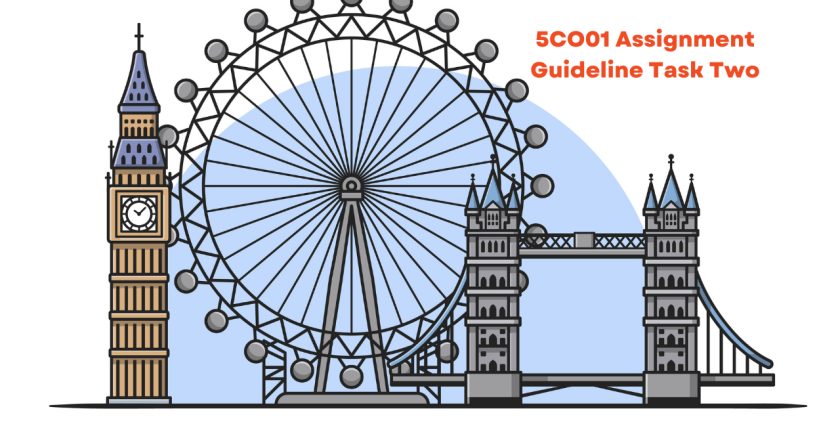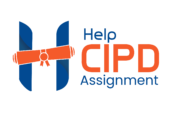5CO01 Assignment Guideline Task Two
- November 12, 2021
- Posted by: admin
- Category: CIPD Level 5

5CO01 Organisational performance and culture in practice
Students pursuing 5CO01 must submit a presentation package for assignment two, in which they will provide an assessment of each learning criteria. To better understand the learning concepts, students are also required to refer to the cast study from BMC. Listed below are the questions for this unit;
Table of Contents
AC 2.1 Principles and models of organisational and human behaviour that demonstrate how individuals, groups, and teams contribute to the success of an organisation
Guidelines
Students will discuss the following theories of human behaviour:
- According to Belbin theory, there are five roles on the Belbin team: resource investigator, implementer, coordinator, plant, team worker, specialist, shaper, monitor, evaluator, and finisher.
- Model of group development based on Tuckman (identifies five stages in the development of a group, including formation, norming, storming, performing, and adjournment).
Students may add theories about motivation such as;-
- In Maslow’s hierarchy of needs (five levels of human motivation: physiological needs, safety needs, love and belonging needs, esteem needs, and self-actualisation needs), the physiological needs are placed at the top.
- Motivation theory of Hertzberg (two-factor theory explaining motivator factors and hygiene factors)
Theories of organisational behaviour include the following:
- Theories of leadership
- Theories of systems
- Alternative collegial models
Students should explain how the theories mentioned above influence each employee individually, how they influence people working in groups or teams, and how they affect the overall organisation.
AC 2.2 we examine the drivers of change in organisations, along with at least two established models explaining how people might experience change.
Guidelines
This lesson will teach students how to identify internal and external drivers of change.
Organisational change of products, financial crisis, complaints from the organisation’s stakeholders, such as customers, and workplace accidents are examples of internal change drivers.
In PESTLE analysis, external change drivers are identified in terms of politics, economics, social, technology, law, and the environment.
The students are also required to identify and explain two types of change models;
- The 8-step change model of Kotter
- The Kubler-Ross curve
- Lewin’s three-stage model of change
- ADKAR
- Adams and Spencer’s seven-step model
AC 2.3 Positive steps you can take to increase diversity and inclusion in your work, and the negative results of not taking these steps
Guidelines
https://www.cipd.co.uk/knowledge/fundamentals/relations/diversity/factsheet to explain the benefits of diversity and inclusion at work and the impact on organisation success.
AC 2.4 Based on your experience and current good practice theories, describe the positive and negative ways that people practices can affect the business culture and behaviour of the organisation
Guidelines
Students must understand that people practices can positively and negatively affect organisational culture and behaviour. In evaluating these aspects, the people professionals should look at the following points:-
- Motivation levels
- Beliefs and values at work
- Openness and trust
- Leadership
- Employees’ perceptions
- Students should focus on analysing models such as;-
- Handy’s 4 Cultural types
- Role-modelling
- Stewardship concept
AC 2.5 Assessment of the significance of well-being in the workplace and identifying factors affecting well-being that can impact physically, psychologically, and relationships, thus affecting health, commitment, and performance.
Guidelines
Refer to these resources for students https://www.cipd.co.uk/knowledge/culture/well-being/factsheet for insight on the issue of well-being at work.
Several factors contribute to employee well-being, and students should explain them. These factors include employee mental health status and stress management.
Additionally, the students should explain the significance of employee well-being for an organisation and individuals. Considerations, in this case, include the following:-
- Workplace absenteeism is reduced
- Retention of employees and reduced turnover
- Healthy workplaces that focus on employee inclusion and growth.
- Engagement, motivation, and morale of employees increased.
AC 3.1 You evaluate your working experience and how it illustrates and demonstrates the employee lifecycle concept and principles.
Guidelines
The students will be identifying concepts in the employee life cycle and evaluating the activities that human resource professionals perform at each stage. These stages are:-
- Recruiting
- Onboarding/Induction
- Employee development
- Employee retention/exit
Students should consider themselves professionals and search for examples of the activities they engage in at the identified stages from the organisations they work for or are familiar with.
If possible, students may consider using first-person language in their examples to demonstrate their involvement and their organisation’s ability to complete the identified activities.
AC 3.2 Building strategic and operational links and supporting people practice with other functions of the organisation
Guidelines
The students evaluate the people practice concept and compare it to the strategic organisational functions organised by senior management. Additionally, they evaluate the partnership between people practices and business operations functions. Last but not least, a link between people practices and organisational services is provided to help identify the best support system for enhancing organisational success.
AC 3.4 Principles of interacting with internal customers to determine their needs
Guidelines
Potential candidates, organisational managers, and employees are examples of internal customers. These customers can be engaged in a variety of ways, including;-
- Joint consultations
- Needs analysis
- Stakeholder analysis
AC 3.5 Components of project planning strategies that ensure projects are performed according to customer requirements
Guidelines
Students should think of a project that they have been a part of within a company or organisation. Students should explain the phases of project management, including the following:
- Project conception
- Project development
- Project realisation
- Project termination.
The students also identify strategies for improving the delivery of the project. Among the approaches are:
- Communication between all stakeholders
- Monitoring project activities with leadership involvement
- Participation of leadership in evaluating project success and lessons learned.
Related :


